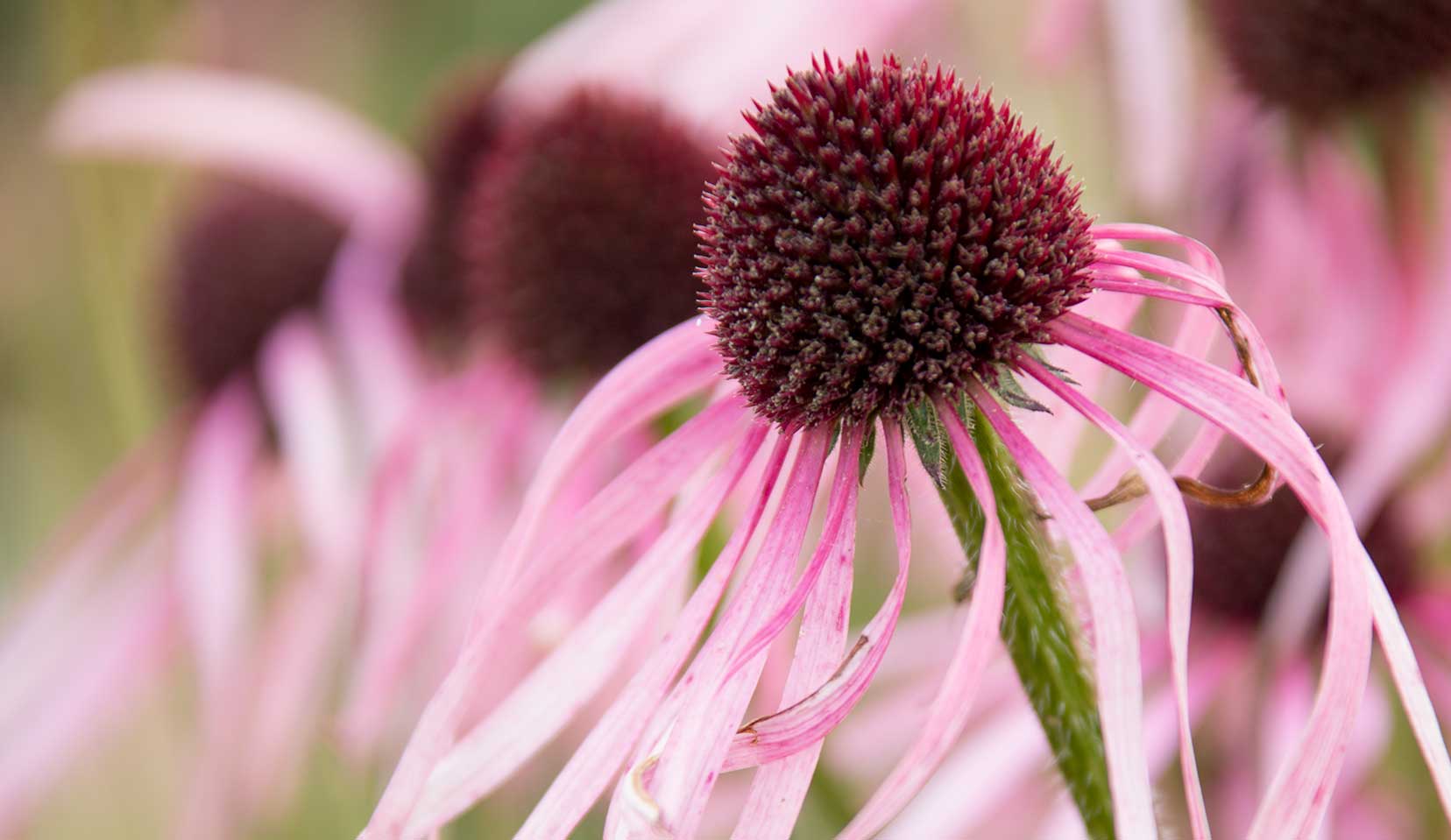Pale-purple coneflower
Synonyms: Pale coneflower, pale-flowered echinacea
Scientific Name: Echinacea pallida
Family: Daisy family (Asteraceae)
Habitat
The pale-purple coneflower is a native of North America where it is found on the dry prairies of the southern states from Alabama to Texas. It is also found in the sparse deciduous forests of the central and eastern states of the USA.
Constituents
Echinacin, essential oil, resins, bitter substances, phytosterols, inulin, polysaccharides and the bacteriostatic echinacoside.
All Plants
![]()
Dr.Hauschka Plant Archive
- Almond Tree
- /
- Apple
- /
- Argan Tree
- /
- Arnica
- /
- Avocado
- /
- Birch
- /
- Bitter Orange
- /
- Blackthorn
- /
- Borage
- /
- Buckwheat
- /
- Butterbur
- /
- Byrophyllum
- /
- Cacao
- /
- Candelilla
- /
- Carnauba
- /
- Carrot
- /
- Cassava
- /
- Castor Oil Plant
- /
- Chicory
- /
- Coconut tree
- /
- Common Oat
- /
- Dog´s Mercury
- /
- Eyebright
- /
- German Chamomile
- /
- Ginger
- /
- Goldenrod
- /
- Greater Burdock
- /
- Hops
- /
- Horse Chestnut
- /
- Ice Plant
- /
- Jojoba
- /
- Kidney Vetch
- /
- Larch
- /
- Lavender
- /
- Lemon
- /
- Lemon Balm
- /
- Lemon Grass
- /
- Macadamia
- /
- Madonna Lily
- /
- Mango
- /
- Manuka
- /
- Marigold
- /
- Marsh mallow
- /
- Mastic tree
- /
- Mistletoe
- /
- Mustard
- /
- Myrrh
- /
- Nasturtium
- /
- Neem
- /
- Norway Spruce
- /
- Olive
- /
- Pale-purple coneflower
- /
- Peppermint
- /
- Pomegranate
- /
- Quince
- /
- Raspberry
- /
- Red Clover
- /
- Rhatany
- /
- Ribwort Plantain
- /
- Rose
- /
- Rosemary
- /
- Sage
- /
- Sandalwood
- /
- Sea Buckthorn
- /
- Sesame
- /
- Shea Tree
- /
- Small nettle
- /
- St. John's Wort
- /
- Sunflower
- /
- Tea
- /
- Tormentil
- /
- White Poppy
- /
- Wild Pansy (Heartsease)
- /
- Wild Strawberry
- /
- Witch Hazel
- /
- Wood Sorrel


